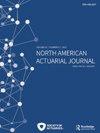Smoothed Quantiles for Measuring Discrete Risks
IF 1.6
Q3 BUSINESS, FINANCE
引用次数: 3
Abstract
Many risk measures can be defined through the quantile function of the underlying loss variable (e.g., a class of distortion risk measures). When the loss variable is discrete or mixed, however, the definition of risk measures has to be broadened, which makes statistical inference trickier. To facilitate a straightforward transition from the risk measurement literature of continuous loss variables to that of discrete, in this article we study smoothing of quantiles for discrete variables. Smoothed quantiles are defined using the theory of fractional or imaginary order statistics, which was originated by Stigler (1977). To prove consistency and asymptotic normality of sample estimators of smoothed quantiles, we utilize the results of Wang and Hutson (2011) and generalize them to vectors of smoothed quantiles. Further, we thoroughly investigate extensions of this methodology to discrete populations with infinite support (e.g., Poisson and zero-inflated Poisson distributions). Furthermore, large- and small-sample properties of the newly designed estimators are investigated theoretically and through Monte Carlo simulations. Finally, applications of smoothed quantiles to risk measurement (e.g., estimation of distortion risk measures such as Value at Risk, conditional tail expectation, and proportional hazards transform) are discussed and illustrated using automobile accident data. Comparisons between the classical (and linearly interpolated) quantiles and smoothed quantiles are performed as well.测量离散风险的平滑分位数
许多风险度量可以通过潜在损失变量的分位数函数来定义(例如,一类失真风险度量)。然而,当损失变量是离散或混合时,风险度量的定义必须扩大,这使得统计推断更加棘手。为了方便从连续损失变量的风险度量文献到离散损失变量的风险度量文献的直接转换,在本文中我们研究离散变量的分位数平滑。平滑分位数是由斯蒂格勒(1977)提出的分数阶或虚阶统计量理论定义的。为了证明光滑分位数的样本估计量的一致性和渐近正态性,我们利用Wang和Hutson(2011)的结果,并将其推广到光滑分位数的向量。此外,我们深入研究了该方法在具有无限支持的离散总体(例如泊松分布和零膨胀泊松分布)中的扩展。此外,通过蒙特卡罗模拟和理论研究了新设计估计器的大样本和小样本性质。最后,讨论了平滑分位数在风险度量中的应用(例如,估计失真风险度量,如风险值、条件尾期望和比例风险变换),并使用汽车事故数据进行了说明。经典(和线性插值)分位数和平滑分位数之间的比较也被执行。
本文章由计算机程序翻译,如有差异,请以英文原文为准。
求助全文
约1分钟内获得全文
求助全文

 求助内容:
求助内容: 应助结果提醒方式:
应助结果提醒方式:


